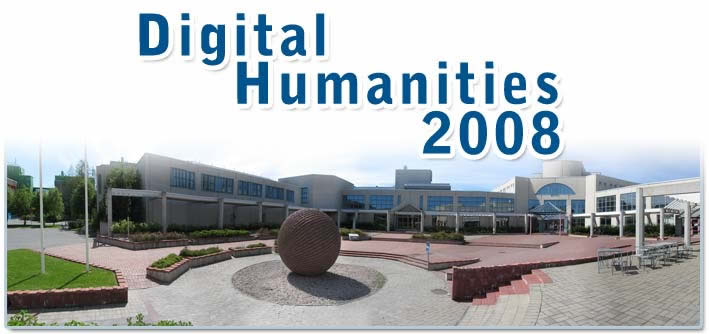

 |
 |
||
|
Towards Intelligent Living Environment – |
|||||||||||||||
|
The Information Processing and Computer Engineering Laboratories of the Department of Electrical and Information Engineering, University of Oulu have a variety of interesting research topics on new emerging technologies. The big question is how to make an intelligent living environment possible, how technology can help us in our everyday life. Before the conference venue starts, you have an opportunity to see some enlightening demonstrations of human computer interaction and digital services. The demo session is open on Wednesday, June 25 at 10-12 non-stop. Place: The lounge of the Electrical Engineering building (Tietotalo I), Restaurant Datania (the restaurant itself is closed). Doors E or R. See Linnanmaa Campus Area map, number 29 (Datania), here. - Digital watermarking of speech and holograms
To study and develop methods for hiding secret identifier information in digital music or video, for example for purposes of digital copyright management. The information is hidden in such a manner that it cannot be detected by human senses or deliberately damaged.
- Digital Oulu Cultural Database
Orientate digitally around Oulu! The database is one of the mobile multimedia services developed at the University of Oulu. It is a content-rich web service that includes hundreds of objects and thousands of multimedia files representing the history of Oulu. On its PC version you can have a photo realistic view on the city centre of Oulu. There is even a virtual guide telling you intriguing details. Behind the service there is multidisciplinary research not only on technology but also on consumer behaviour, human-computer interaction, and information security.
- Automatic facial expression and visual speech recognition
The computer might in near future be able to recognize the emotional stage of a person.
Very good results have been achieved at the University of Oulu in automatic analysis of facial expression from video images. The six basic facial expressions (happiness, sadness, surprise, fear, anger, disgust) can be recognized in real-time when the video clips are running. The goal of the research is to make human computer interaction as similar as possible to interaction between humans.
- Real-time face detection on a camera phone
Camera-equipped mobile phones are popular nowadays. Advanced user interfaces are being developed in order to make the best use of the cameras available at phones. In this application the camera on the mobile phone can find the faces from the camera view in real-time. It is an advanced concept of vision-based user interfacing. Later the face information can be used for example in identification of the user or in finding pictures of a certain person from picture files.
- Orienteering with RFID tags: Touch and run game, tabletop version
Radio frequency identification is becoming reality in everyday life applications. By an NFC (Near Field Communication) equipped mobile phone it is possible to open different kind of data contents and applications by just touching the RFID tag with the phone. The information received from the tag can be shared with others or stored for later use. The Touch and run game demonstrates the RFID technology in use when a group of people play an orienteering game by collecting and sharing information.
- Autonomous interacting robot swarms and minirobots measure the environment
Autonomous robots and software for their control are actively developed at the University of Oulu. One example is a swarm of autonomous robots (composed of 10-15 devices) which operates as a team in the surrounding infrastructure. The swarm can carry out different tasks and share information between the individual robots. Another example are the miniature mobile robots which can learn and adapt as well. The robots are used to study collective behavior. They enable various interesting applications such as remote monitoring. The robots can also measure different kind of elements from the environment. - Video Retrieval System
This system utilizes features computed from digital video material and uses them to evaluate similarities between video clips. The features are computational values derived from color, sound and movement, and they are combined with semantic descriptions formed from the clips. On this basis the computer makes comparisons between different video clips and returns the clips that best correspond to the example to the user.
- Video Browser of the Future
This demonstration portraits how research in technology will affect an everyday life by simplifying the creation and management of the video, text and image archives. This application facilitates searching from the video records using novel content-based access and browsing technology. The video storage utilized in the demonstration contains Finnish news from the Northern Finland. The news can be searched using keywords and browsed by visual similarity of the video clips.
|